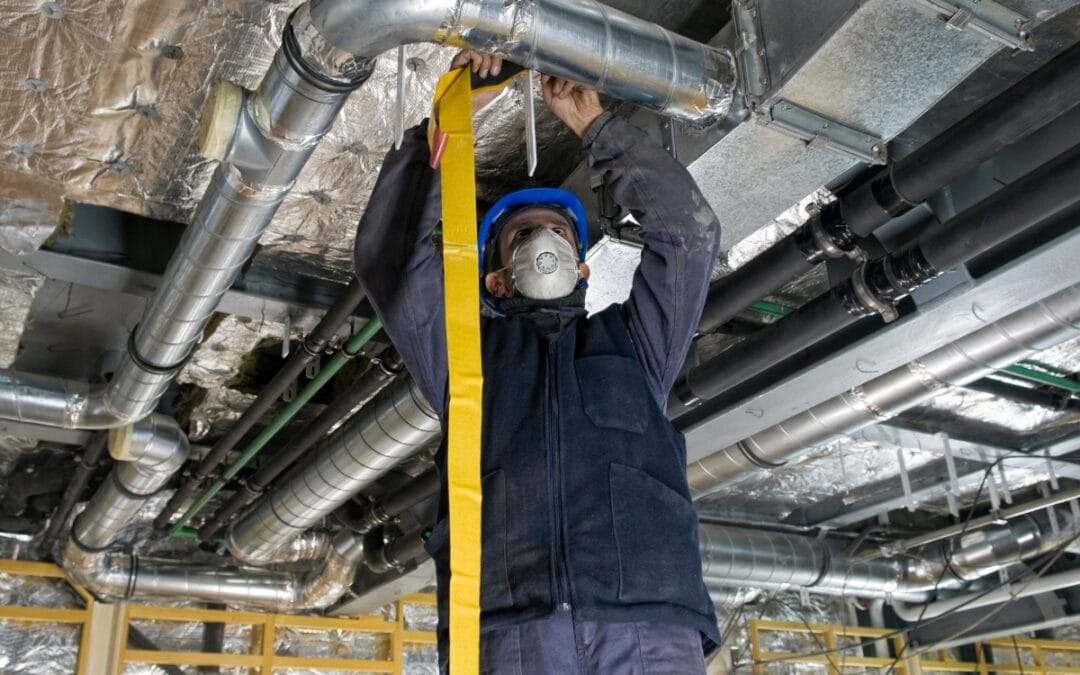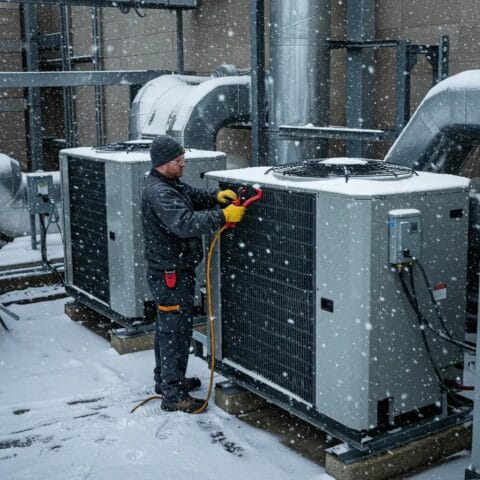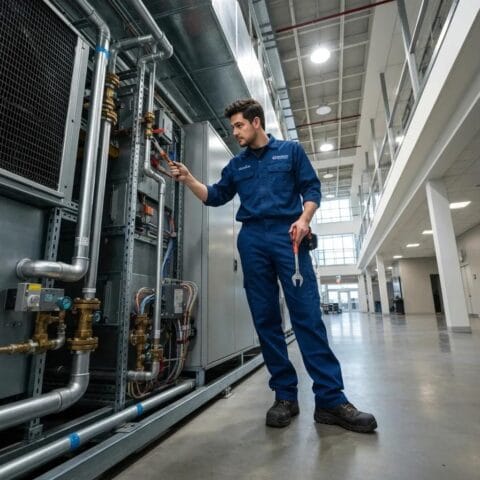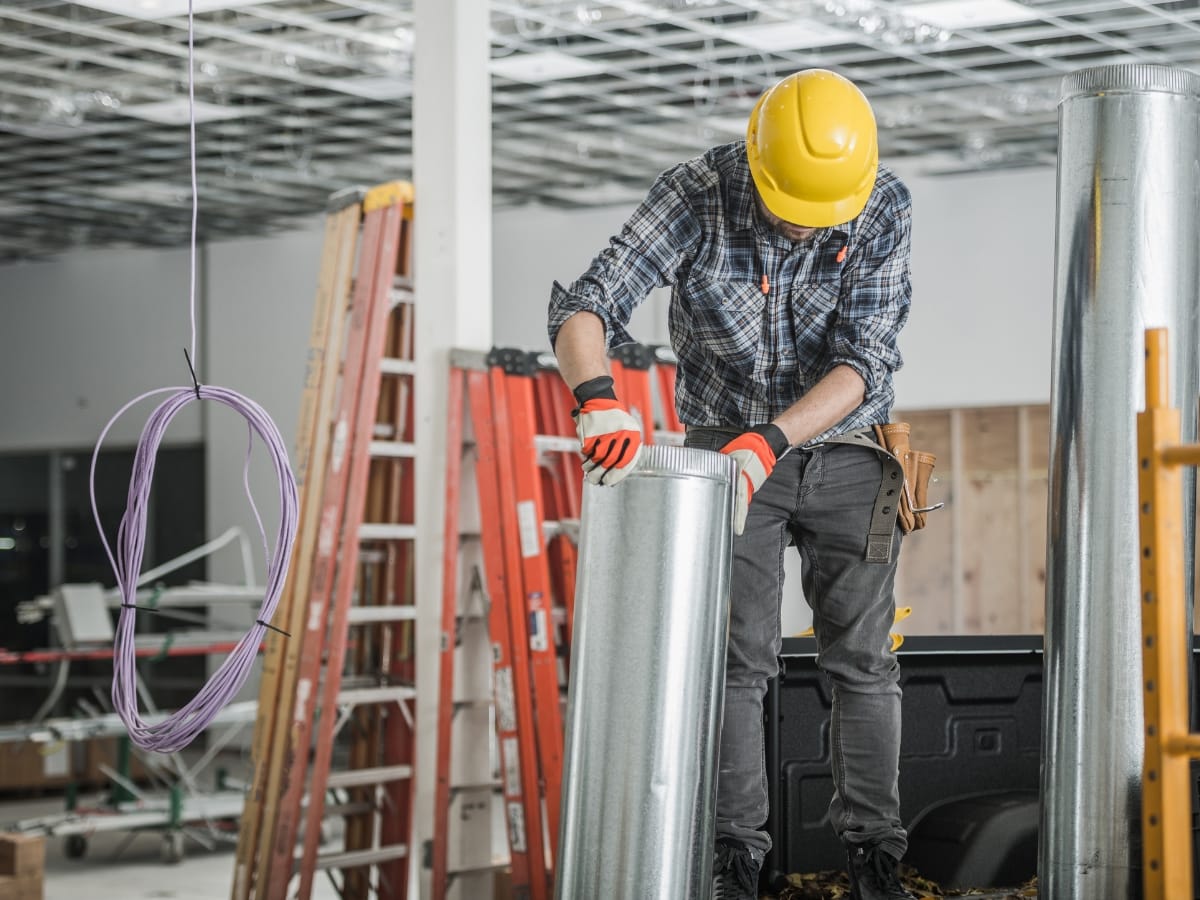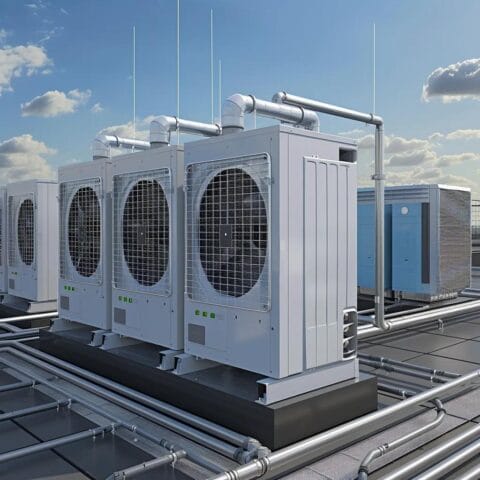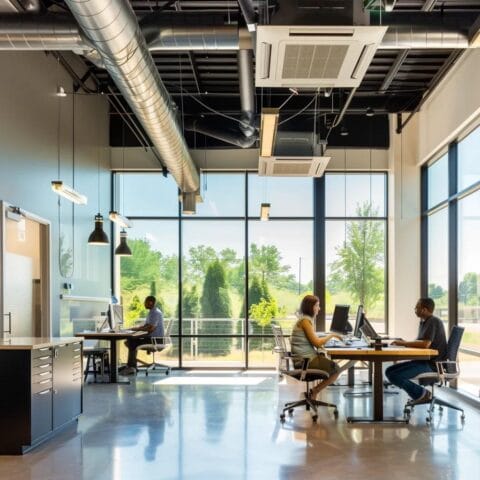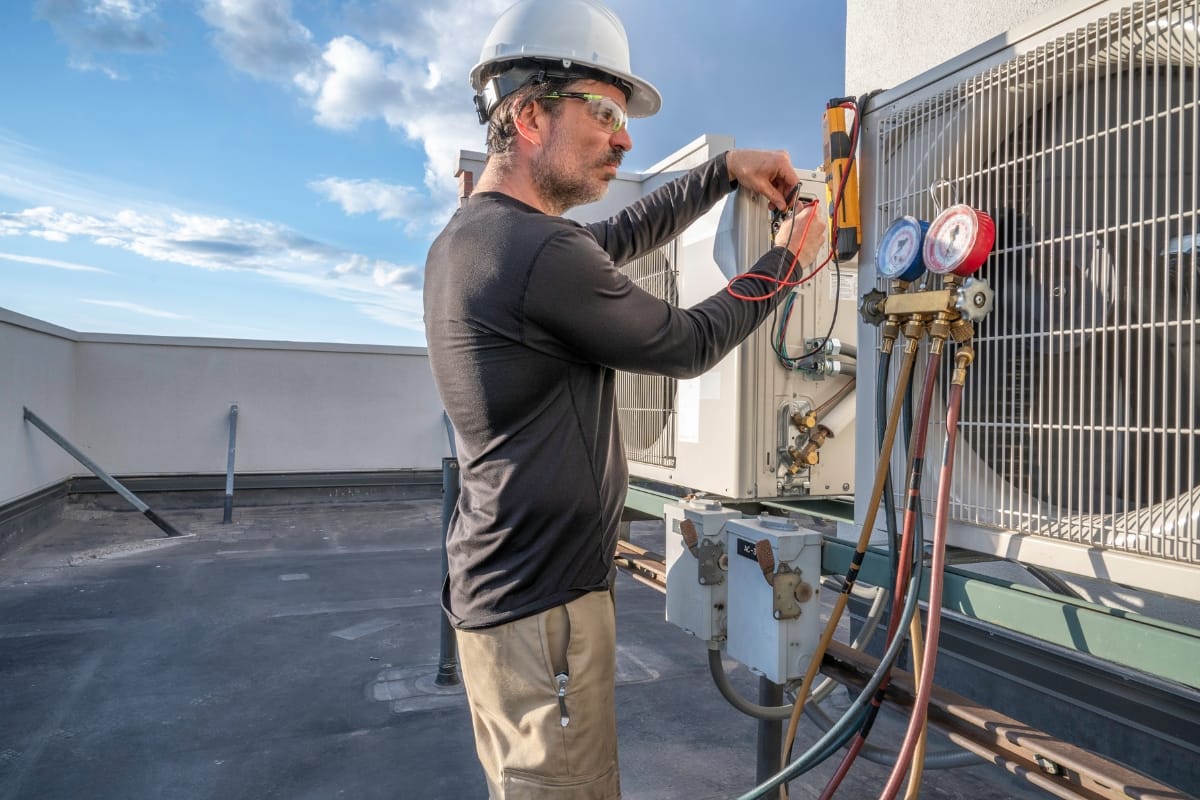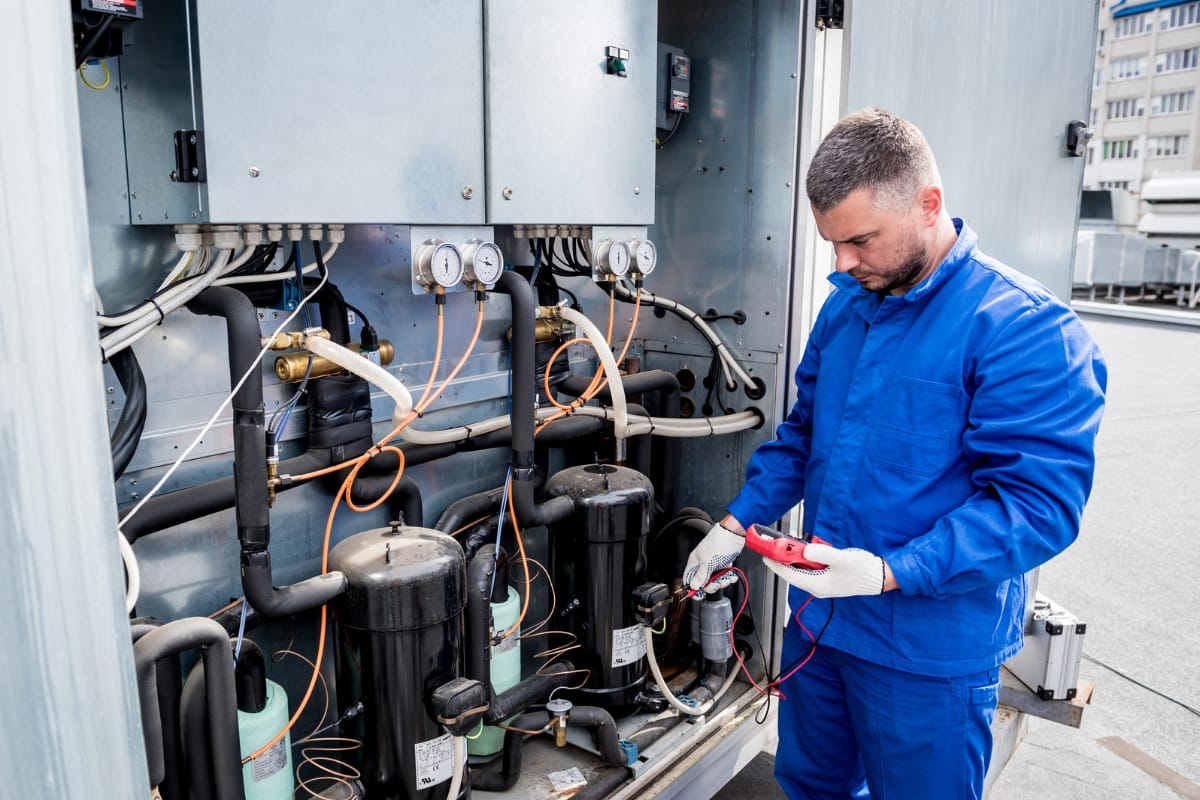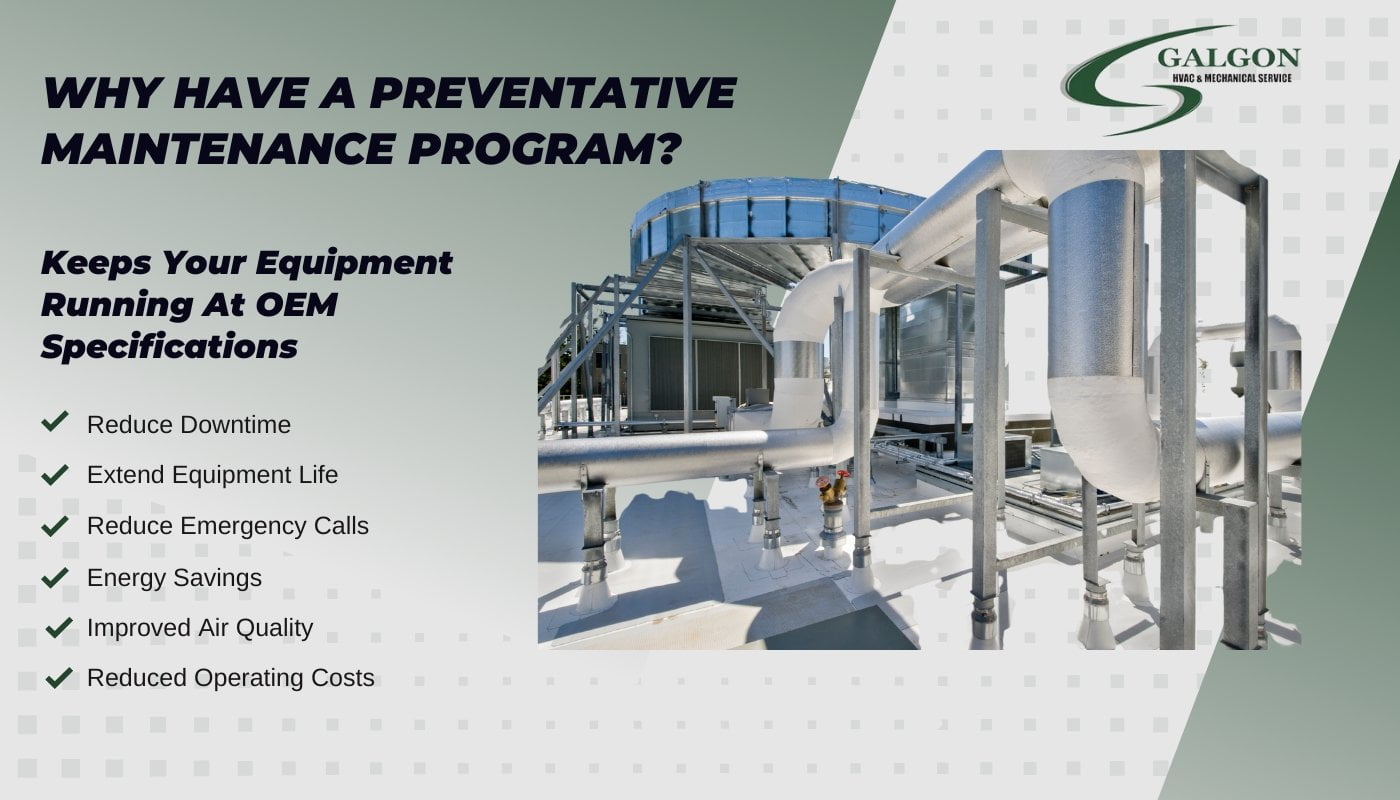A well-maintained commercial HVAC system is more than just a source of comfort—it’s a powerful tool for reducing operating costs and improving your company’s bottom line. When HVAC systems operate efficiently, they consume less energy, require fewer emergency repairs, and last longer, directly lowering utility bills and maintenance expenses. In this guide, we’ll explore practical strategies for maximizing HVAC performance—from scheduled maintenance and smart thermostat integration to proactive component upgrades—so you can create a more sustainable, cost-effective operational environment while maintaining ideal indoor conditions for employees and customers.
How a Well-Maintained HVAC System Slashes Operating Costs
What Are the Main Factors Driving Commercial HVAC Operating Costs?

The operating costs of a commercial HVAC system are influenced by several key factors, all of which interact to determine overall efficiency, reliability, and energy use. Systems that lack regular maintenance or operate with outdated controls often consume more electricity and experience higher repair rates. Building conditions, such as poor insulation or leaky ductwork, can further increase heating and cooling demand. Understanding these cost drivers allows facility managers to identify where improvements can deliver the greatest financial return.
Energy use remains the largest contributor to total operating cost, as HVAC systems typically account for the majority of a commercial building’s utility bill. Deferred maintenance, such as skipped filter changes or neglected coil cleaning, adds strain to components and leads to costly breakdowns. Equipment age also plays a major role—older or poorly maintained units lose efficiency over time, forcing them to run longer and harder to achieve the same comfort levels. Operational habits, including thermostat settings and building occupancy schedules, can either reduce or amplify these expenses. Improving even one of these areas often has a compounding benefit on the others.
How Does Energy Consumption Affect HVAC Expenses?
Energy consumption is the most visible and measurable component of HVAC expenses. Inefficient equipment, clogged filters, or incorrect refrigerant levels force systems to work longer to maintain temperature, driving up both kilowatt-hour usage and peak demand charges. A single malfunction, such as a dirty condenser coil, can increase energy use by double digits while shortening equipment lifespan.
Addressing these inefficiencies through routine inspections and fine-tuning controls can significantly lower operating costs. Energy monitoring systems also provide data-driven insights, helping facility teams detect unusual patterns that signal underlying performance issues. Reducing runtime and optimizing setpoints are straightforward ways to cut energy use without compromising comfort, especially in large commercial spaces with variable occupancy.
Why Are Maintenance and Repairs Critical to Cost Management?
Preventative maintenance is one of the most effective strategies for keeping HVAC costs under control. Regular service prevents small performance issues from escalating into major failures that require expensive emergency repairs. By maintaining proper airflow, refrigerant levels, and mechanical calibration, a well-maintained commercial HVAC system can operate closer to its design efficiency, delivering consistent comfort and lower energy consumption.
Neglecting maintenance not only increases utility costs but also leads to premature equipment wear and unplanned downtime. A proactive maintenance plan creates predictable service costs, reduces disruptions to daily operations, and helps extend the lifespan of critical components. In the long run, this approach lowers the total cost of ownership and improves return on investment.
How Does Equipment Lifespan Influence Operating Costs?
The lifespan of HVAC equipment directly affects long-term operating expenses. When systems are maintained properly, their components—such as compressors, fans, and motors—perform efficiently for many years, delaying costly replacements. Conversely, systems that run under stress due to poor maintenance or high energy demand tend to fail early, forcing owners to invest in new units sooner than expected.
A well-maintained commercial HVAC system that operates efficiently throughout its intended life cycle not only saves on energy but also reduces the annualized cost of ownership. Reinvesting in maintenance and minor upgrades, like improved controls or variable-speed drives, can further extend operational life and enhance system reliability, keeping overall costs manageable for the long term.
How Can Preventative HVAC Maintenance Reduce Operating Costs?
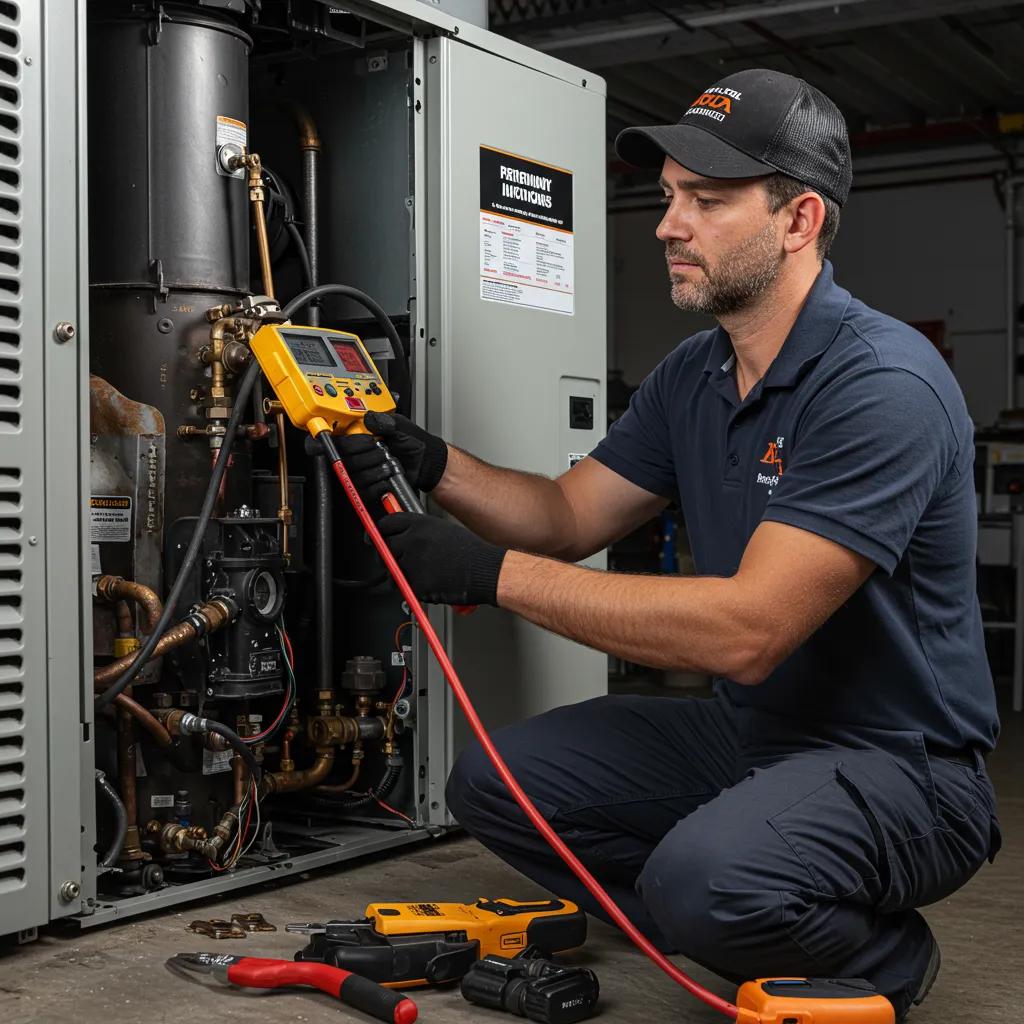
Preventative maintenance is one of the most effective ways to reduce the long-term operating costs of a commercial HVAC system. Regular service helps restore system efficiency, prevent unexpected breakdowns, and ensure that controls are properly calibrated so the system only runs when needed. Tasks such as changing filters, cleaning coils, checking refrigerant levels, lubricating motors, and testing controls all work together to improve airflow, heat transfer, and overall system performance. These actions lower energy use, extend the lifespan of critical components, and minimize emergency repairs that can disrupt operations and budgets.
By investing in a consistent maintenance routine, facility managers can significantly lower utility bills and avoid costly downtime. Catching small issues before they become major failures allows for predictable service scheduling and smoother financial planning. The result is a more reliable, efficient, and cost-effective HVAC system that supports both operational goals and occupant comfort.
What Are the Key Benefits of Preventative Maintenance for Commercial HVAC?
A well-maintained commercial HVAC system delivers measurable benefits across performance, energy efficiency, and longevity. When filters, coils, and ducts remain clean and properly adjusted, airflow improves, equipment runs at its intended capacity, and strain on motors and compressors decreases. These factors directly translate into lower energy consumption and reduced wear on expensive components.
Preventative maintenance also reduces the risk of unplanned outages that can interrupt business operations or impact tenant satisfaction. Reliable temperature control and improved indoor air quality lead to a more comfortable environment, which is especially important for offices, retail spaces, and hospitality settings. Over time, the savings from reduced energy use, fewer emergency repairs, and extended equipment life far exceed the cost of scheduled maintenance.
How Does a Structured Maintenance Program Support Long-Term Cost Savings?
A structured maintenance program ensures that inspections, tune-ups, and repairs occur on a consistent schedule rather than being performed reactively after a breakdown. This proactive approach helps maintain equipment efficiency, keeps warranties valid, and identifies potential failures early. Regular maintenance tasks like coil cleaning and refrigerant checks can restore lost performance, often saving between five and fifteen percent in energy costs.
Facility managers who implement a formal maintenance plan can also track system performance over time, using data to identify efficiency trends and plan capital upgrades strategically. By reducing energy intensity and avoiding major repair events, a well-maintained commercial HVAC system offers both immediate cost savings and long-term financial stability.
Ultimately, preventative maintenance is not just a service expense—it is a proven investment in operational reliability and building performance. Keeping a commercial HVAC system in top condition supports lower energy bills, extended equipment life, and a more comfortable environment for everyone inside.
Which Energy-Efficient Upgrades Help Lower Commercial HVAC Costs?
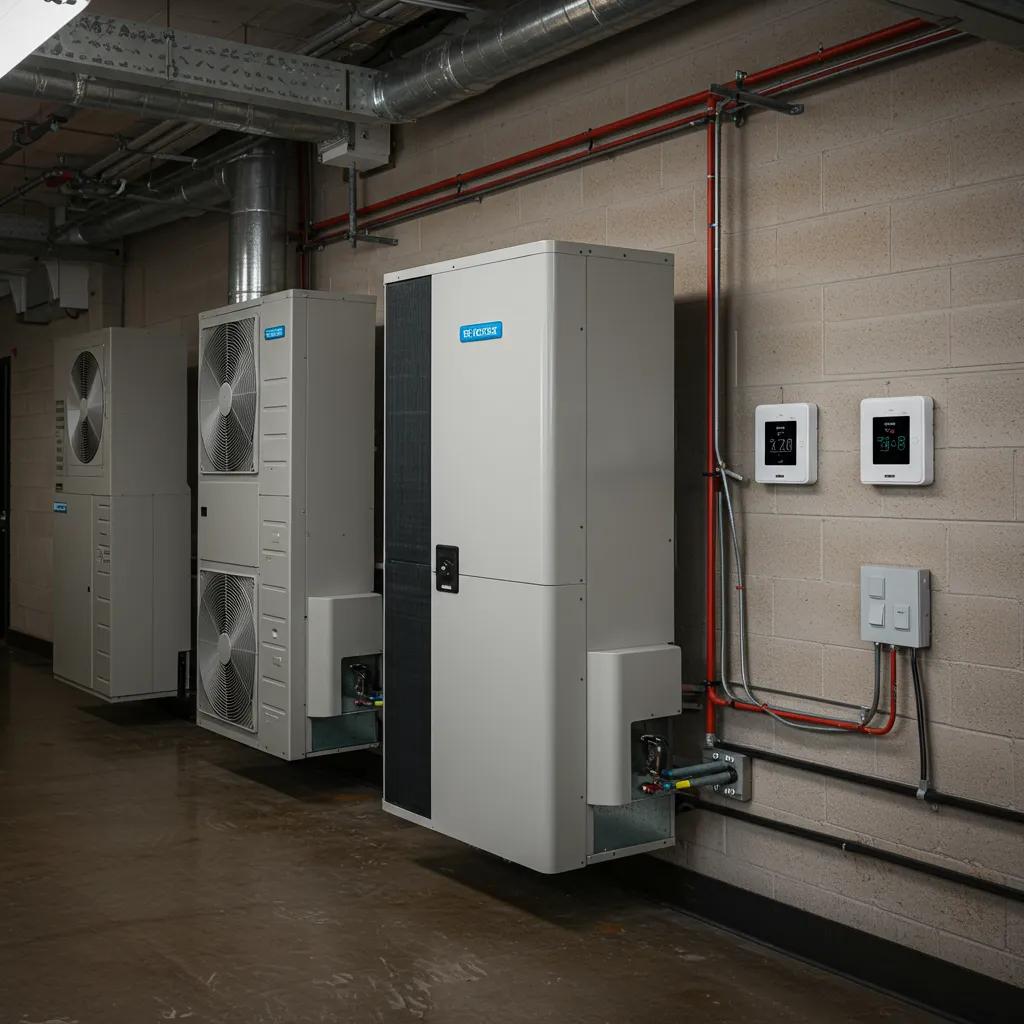
Energy-efficient upgrades are one of the most effective ways to lower long-term operating costs for a commercial HVAC system. Improvements that reduce system runtime or enhance control precision tend to offer the fastest return on investment. Replacing older units with high-efficiency models, adding variable-speed drives, implementing Variable Air Volume (VAV) zoning, and installing smart thermostats or a Building Automation System (BAS) can all lead to measurable energy reductions. These upgrades allow systems to match output to actual building demand rather than running continuously at full capacity.
Pairing upgrades with a preventative maintenance program maximizes performance and ensures components work together efficiently. In many cases, businesses can achieve energy savings between 10 and 30 percent, depending on system size, operating hours, and climate. The combination of advanced hardware and smarter control systems not only lowers energy bills but also extends the lifespan of equipment and reduces the frequency of costly service calls.
How Do High-Efficiency HVAC Units Cut Energy Bills?
High-efficiency HVAC units are designed to deliver the same or better comfort while using less power. This efficiency comes from upgraded compressor technology, improved motor designs, and optimized heat exchangers that reduce wasted energy. Systems with higher Seasonal Energy Efficiency Ratio (SEER) or Energy Efficiency Ratio (EER) ratings perform better in demanding conditions, especially in facilities that operate heating and cooling equipment for extended hours.
While the initial cost of high-efficiency equipment may be higher, the energy savings accumulate quickly, often leading to full payback within several years. Over the system’s lifetime, these savings compound to offset both the initial investment and maintenance expenses. For many businesses, upgrading to a high-efficiency model is the single most effective step toward lowering HVAC-related utility costs while maintaining comfort and reliability.
What Role Do Smart Thermostats and Building Automation Systems Play?
Smart thermostats and building automation systems add precision control to a commercial HVAC setup, helping reduce unnecessary energy use and providing valuable performance insights. These systems manage schedules, adjust temperatures automatically based on occupancy, and integrate with sensors to minimize heating and cooling during low-use periods. BAS platforms also enable remote monitoring, allowing facility teams to track performance, receive alerts, and make quick adjustments without on-site visits.
This technology transforms HVAC management from reactive to predictive. By analyzing trends and sending early warnings about performance issues, automation systems reduce both downtime and maintenance costs. Smart controls also help facilities participate in demand-response programs that offer utility incentives for reducing energy during peak periods. Together, these features make smart thermostats and BAS an essential part of any strategy to operate a well-maintained commercial HVAC system efficiently.
Why Combining Upgrades and Maintenance Delivers Maximum Savings
The best results come from integrating energy-efficient upgrades with consistent maintenance. New technology performs at its peak only when filters are clean, coils are maintained, and calibration is verified regularly. A well-maintained commercial HVAC system equipped with modern controls operates more efficiently, experiences fewer breakdowns, and delivers steady comfort throughout the year. This combination extends equipment life, enhances ROI, and keeps long-term operating costs predictable and low.
How Does Optimizing Ductwork and Insulation Improve HVAC Cost Efficiency?

Optimizing ductwork and insulation is one of the most effective ways to improve the cost efficiency of a commercial HVAC system. Properly sealed ducts and adequate insulation ensure that conditioned air is delivered exactly where it’s needed, without unnecessary energy loss. When air escapes through leaks or when surfaces are poorly insulated, the system must run longer to reach the desired temperature, increasing both energy use and wear on components.
A well-maintained commercial HVAC system relies on airtight ductwork to maintain consistent airflow and temperature balance. Leaky ducts can waste as much as 10 to 30 percent of conditioned air, while insufficient insulation around piping or air handlers allows heat to transfer into or out of the system. Over time, these inefficiencies add up, resulting in higher energy bills and reduced comfort. By sealing leaks, adding insulation where needed, and balancing airflow, businesses can lower operational costs and improve indoor comfort without upgrading major equipment.
Why Is Duct Sealing Important for Reducing Energy Waste?
Duct sealing directly reduces energy waste by preventing conditioned air from escaping into unconditioned areas such as attics, basements, or wall cavities. Every leak forces the system to compensate by running longer and harder, which not only wastes energy but also increases strain on fans, compressors, and motors. Proper sealing restores airflow efficiency and ensures that air delivered by the system reaches occupied spaces at the correct temperature.
Sealing methods typically involve applying mastic sealant, foil-backed tape, or advanced aerosol-based technologies that reach hidden gaps inside the ductwork. After sealing, a verification test can measure airflow improvements and confirm that the system is performing efficiently. The result is better temperature consistency, quieter operation, and measurable reductions in heating and cooling costs.
How Does Enhanced Insulation Contribute to Lower Operating Costs?
Upgrading insulation is another important step in improving the efficiency of a commercial HVAC system. Insulating roofs, walls, ducts, and chilled-water lines limits unwanted heat gain in summer and heat loss in winter, allowing the HVAC equipment to maintain indoor comfort with less energy. Insulated ductwork also prevents condensation, which can cause moisture damage and microbial growth in ceiling or wall cavities.
Focusing on high-loss areas, such as roof spaces and unconditioned mechanical rooms, can yield significant savings. Even a small improvement in insulation thickness or coverage can lower system runtime and stabilize indoor temperatures. This, in turn, extends equipment life and improves occupant comfort, especially in large buildings with varied thermal zones.
Why Airflow Balancing Matters for Efficiency and Comfort
Airflow balancing ensures that every room receives the correct amount of conditioned air, reducing the need for occupants to adjust thermostats or use supplementary heaters and fans. When airflow is uneven, some areas may overheat while others stay too cold, forcing the HVAC system to cycle unnecessarily. Balancing dampers, cleaning diffusers, and verifying fan performance help maintain proper distribution throughout the building.
When combined, duct sealing, improved insulation, and balanced airflow can transform a standard system into a well-maintained commercial HVAC system that operates more efficiently, provides consistent comfort, and significantly reduces energy costs over time.
When Should Commercial Buildings Schedule HVAC Maintenance to Maximize Savings?

Timing is one of the most important factors in keeping a well-maintained commercial HVAC system efficient and cost-effective. Scheduling maintenance around equipment duty cycles and seasonal demands helps ensure that systems operate reliably when temperatures reach their extremes. For most commercial buildings, regular inspections, filter changes, and seasonal tune-ups not only preserve performance but also minimize costly mid-season breakdowns. A predictable maintenance schedule also allows for better budgeting, supports rebate eligibility from utility providers, and aids in planning future equipment replacements.
Quarterly inspections are often ideal for identifying developing issues before they turn into major failures. Checking and replacing filters every month or quarter maintains proper airflow and protects coils from clogging. Semi-annual coil and refrigerant checks keep heat transfer efficient, while a comprehensive annual tune-up ensures all controls, electrical connections, and mechanical parts are operating correctly. While these intervals fit most commercial facilities, properties such as hospitals, laboratories, or data centers may require more frequent service due to higher system loads.
How Often Should Preventative Maintenance Be Performed?
Preventative maintenance frequency depends on the building’s use, environmental conditions, and the specific HVAC equipment in place. As a general guideline, filters should be checked at least once a month during peak operation and replaced as needed to maintain proper airflow. Coils should be cleaned twice a year to prevent buildup that can reduce efficiency, and a full inspection of compressors, fans, belts, and control systems should be performed annually.
For buildings that operate HVAC systems continuously or in high-dust or high-humidity environments, more frequent checks may be necessary. Using data from a building automation system (BAS) can help fine-tune these intervals by tracking run times and efficiency patterns. Maintaining a detailed record of all inspections and repairs also helps identify performance trends, making it easier to predict component replacement needs and budget for future upgrades.
What Seasonal Maintenance Tasks Are Essential for Cost Reduction?
Seasonal tune-ups prepare a commercial HVAC system for heavy workload periods and help prevent costly emergency repairs. Before summer, technicians should check refrigerant levels, clean condenser coils, clear condensate drains, and verify that thermostats and sensors are properly calibrated. Before winter, the focus shifts to inspecting heating components, checking insulation on exposed pipes, and confirming combustion efficiency for gas-fired systems.
These seasonal preparations improve reliability, reduce peak energy demand, and ensure consistent comfort for building occupants. They also minimize the likelihood of system downtime during extreme weather, which can be far more expensive to fix under urgent conditions. Including seasonal maintenance tasks in a structured service plan creates a proactive approach that lowers total operating costs over time.
A well-maintained commercial HVAC system that follows a seasonal maintenance schedule not only performs more efficiently but also provides long-term savings by extending the life of major components and preventing unexpected failures.
Frequently Asked Questions
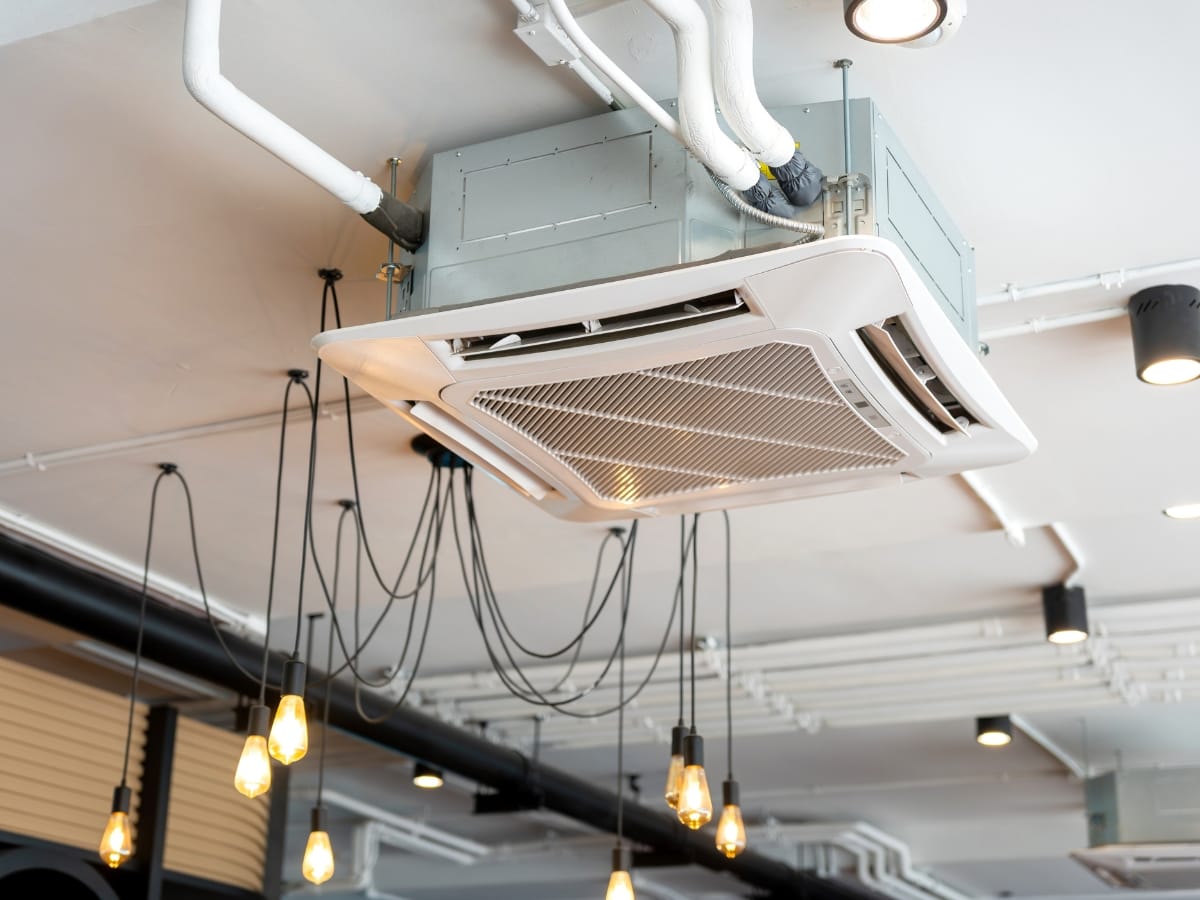
What are the signs that my commercial HVAC system needs maintenance?
Signs that your commercial HVAC system requires maintenance include unusual noises, inconsistent temperatures, increased energy bills, and frequent cycling on and off. Additionally, if you notice poor indoor air quality, such as excessive dust or humidity, it may indicate that your system is not functioning optimally. Regular inspections can help identify these issues early, preventing costly repairs and ensuring efficient operation. If you observe any of these symptoms, it’s advisable to schedule a maintenance check promptly.
How can I determine the right time to upgrade my HVAC system?
Determining the right time to upgrade your HVAC system involves assessing its age, efficiency, and repair history. If your system is over 10-15 years old, frequently requires repairs, or has a SEER rating below 14, it may be time to consider an upgrade. Additionally, if your energy bills have significantly increased without a change in usage, this could indicate inefficiency. Consulting with a professional can provide insights into potential savings and the best upgrade options for your facility’s needs.
What are the benefits of using a Building Automation System (BAS)?
A Building Automation System (BAS) offers numerous benefits, including enhanced energy efficiency, improved occupant comfort, and streamlined operations. By automating HVAC controls, a BAS can optimize energy use based on occupancy patterns and environmental conditions, reducing waste. It also provides real-time monitoring and diagnostics, allowing for proactive maintenance and quicker response to issues. Overall, implementing a BAS can lead to significant cost savings and a more comfortable environment for building occupants.
How do I choose the right HVAC contractor for maintenance services?
Choosing the right HVAC contractor involves evaluating their experience, certifications, and customer reviews. Look for contractors who specialize in commercial HVAC systems and have a proven track record of successful maintenance programs. It’s also beneficial to ask for references and check their licensing and insurance. A reputable contractor should provide a detailed maintenance plan, including scheduled inspections and emergency services, ensuring that your HVAC system remains efficient and reliable.
What is the impact of indoor air quality on HVAC operating costs?
Indoor air quality (IAQ) significantly impacts HVAC operating costs. Poor IAQ can lead to increased energy consumption as the system works harder to maintain comfort levels. Contaminants like dust, mold, and volatile organic compounds can cause health issues, leading to higher absenteeism and reduced productivity. Regular maintenance, including filter changes and duct cleaning, can improve IAQ, reduce energy use, and lower operating costs, creating a healthier environment for occupants and more efficient system performance.
Are there any government incentives for upgrading to energy-efficient HVAC systems?
Yes, many governments offer incentives for upgrading to energy-efficient HVAC systems, including tax credits, rebates, and grants. These programs aim to encourage businesses to invest in energy-saving technologies that reduce overall energy consumption and greenhouse gas emissions. To take advantage of these incentives, check with local utility companies and government agencies for available programs and eligibility requirements. Investing in energy-efficient upgrades not only lowers operating costs but can also provide financial benefits through these incentives.
Conclusion
A well-maintained commercial HVAC system is more than a comfort feature—it’s a strategic investment that directly reduces operating costs, extends equipment life, and protects your bottom line. At Galgon HVAC & Mechanical Service, we help businesses optimize performance through proactive commercial HVAC maintenance, energy-efficient upgrades, and 24/7 emergency support. Start saving today: Call (404) 352-1500 or request a service quote online to schedule your commercial HVAC assessment. Let’s build an efficient, reliable system that works as hard as you do.

